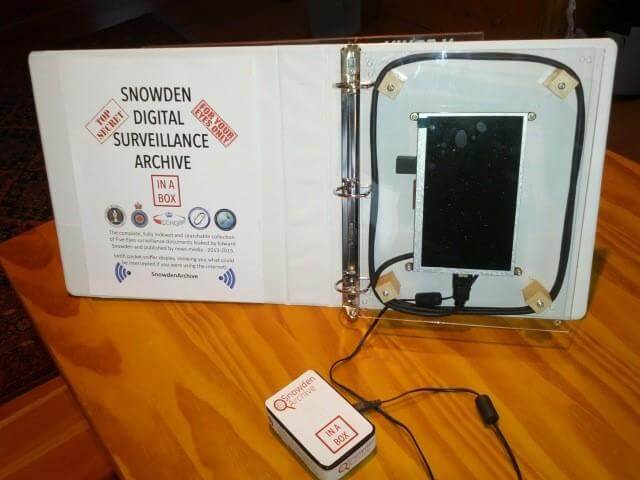Snowden Surveillance Archive
Andrew Clement, University of TorontoBoston 2017: Policy

The Snowden Surveillance Archive project seeks to stimulate and facilitate an informed public debate about the nature and significance of the mass state surveillance conducted by the U.S. National Security Agency (NSA) and its Five Eyes partners (UK, Canada, Australia and New Zealand). The principal means for pursuing this objective is the development and promotion of a widely accessible and searchable collection of all the documents that Edward Snowden disclosed to journalists in 2013 that have subsequently been published by established media. The Archive was designed and built by professional archivists to provide a finding aid to enable academic, legal, journalistic or lay researchers to readily locate and study Snowden documents as well as related media reporting.
The Archive exists in two formats: a standard web-accessible version (https://snowdenarchive.cjfe.org) and a portable off-the-net version referred to as the Snowden Archive in a Box (SAIB). It is this latter format that will be the main focus of the Making and Doing exhibit. The SAIB is a stand-alone wifi network and web server designed to provide end-users with a secure off-line method for using this Snowden Archive without the risk of mass surveillance. Anyone within range of its wifi signal (SSID: SnowdenArchive) can access the Archive with their phone/tablet/laptop by connecting to this network and then pointing their browser to http://nsa.gov; The SAIB is based on the RaspberryPi (RPi) micro-computer running the opensource Raspbian operating system. SAIB is built in two configurations:
1) The basic set-up consists of just the RPi box (about the size of a pack of cards).
2) The enhanced version also serves as a surveillance demonstration apparatus, including ‘packet-sniffing’ software for monitoring wifi traffic in the vicinity and a screen for playing the intercepted data publicly in real-time.
This vividly illustrates the information that the NSA would intercept from anyone using the web version of the Archive, or any other internet service. This Making and Doing exhibit will highlight several aspects of the Snowden Archive project that are pertinent to scholarship generally and STS issues in particular:
- The Archive provides a unique resource for research into and teaching about the technopolitics of contemporary mass state surveillance and internet infrastructure. In particular, the SAIB configuration enables scholars to investigate this controversial document collection without drawing the attention of security agencies to their specific activities. In a teaching context, instructors can introduce their students to these documents without the risk of putting them under suspicion.
- As a complement to this documentary resource for research, the various specific technical configurations of the Archive reflexively provide insight into critical aspects of communications and surveillance infrastructures. Most obvious are the varied specific materialities of where, how and by whom internet surveillance can be conducted.
- Publicly exhibiting the formerly secret documents that reveal evidence of illegal and unconstitutional behaviour by state agencies represents an act of solidarity (albeit a modest one) with Edward Snowden and other whistleblowers who at considerable personal cost have made significant contributions to our knowledge of important threats to democratic rights. It also constructively asserts academic freedoms that all independent scholarship ultimately depends on at a time when these are under evidently growing threat. In addition to helping attendees better understand the Snowden revelations, an important aim of this exhibit is to encourage their own making and doing – specifically to build or otherwise acquire their own SAIB for installing and using at their home institutions.
Published: 01/30/2023
